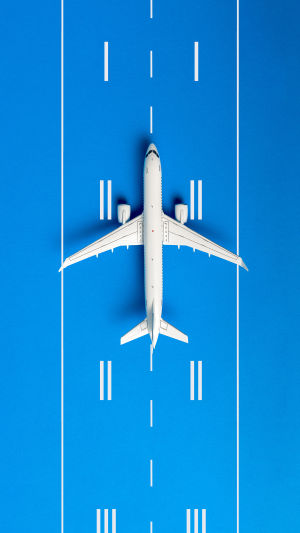Flying stands as one of the most modern, efficient, and rapid modes of transportation.
Nevertheless, for a trip to be smooth and comfortable, passengers must pay attention to a series of crucial factors while on board.
Why the Marvel of Airplane Takeoff and Landing the Most Dangerous?
The Black 11 Minutes:
The "black 11 minutes" in aviation, comprises the three minutes post takeoff and the eight minutes before landing. This period is considered the most perilous in aviation, similar to the vulnerability of a car during starts and stops.
The takeoff, approach, and landing stages, constituting approximately 17% of the total flight time, witness a staggering 78% probability of accidents. The limited time available to pilots during these stages, owing to the high altitude, heightens the risk, as the response time to any mishap is minimal.
Crew Involvement:
Pilots experience heightened stress and focus during the approach and landing phases. Instrument equipment must simultaneously interpret ground signals like the localizer, glide slope, and beacon platform.
Maintaining close communication with the tower, pilots must precisely control course and altitude to prevent accidents like failed landings or crashes.
Aircraft Performance:
In the moments before landing and after takeoff, the aircraft's flight performance enters a critical stage. The aircraft relies on air buoyancy, or lift, closely tied to flight. Consequently, speed fluctuations are most significant during takeoff and landing.
Be sure to remember these precautions when taking off and landing:
Take off: Safety Measures:
- Secure Seating
Before takeoff, ensure seats are securely locked, and seatbacks are upright. Fasten seat belts properly.
- Luggage Handling
Place luggage securely in designated compartments to avoid emergencies and maintain aisle accessibility.
- Electronic Devices
Turn off or switch electronic devices to airplane mode before takeoff to prevent interference with navigation systems.
- Safety Demonstration
Pay attention to safety demonstrations, familiarizing yourself with emergency exits and floating equipment.
- Seat Positioning
In some flights, fold seatbacks flat during takeoff to enhance safety and minimize head injury risks.
- Maintain Quiet
Refrain from excessive talking or loud headphone use during takeoff to heed crew announcements and emergency instructions.
Landing: Pre-Landing Checks:
- Return to Seat
Before landing, return to your seat, fasten seat belts, and avoid moving outside your seat.
- Luggage Inspection
Double-check luggage stowage to ensure items are secure for a smooth landing.
- Stay Seated
During landing, remain seated without excessive leaning to reduce impact during touchdown.
- Follow Crew Instructions
Adhere strictly to crew instructions regarding seat positions, curtain openings, etc., as these are crucial for flight safety.
- Delayed Luggage Handling
Refrain from opening the luggage compartment prematurely; wait until the plane comes to a complete stop.
- Careful Seat Belt Unbuckling
Unbuckle seat belts only when granted permission by the crew, avoiding premature actions while the aircraft is still in motion.
- Orderly Deplaning
Follow crew instructions during deplaning, ensuring an orderly exit to prevent crowding and chaos.
Patience is Key:
After landing, patiently wait for instructions from the crew, as it may take some time to exit the aircraft.
During these critical moments of takeoff and landing, passengers must heed crew instructions, remain calm, and cooperate to ensure the safety and smooth operation of the flight.





